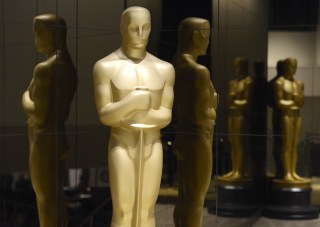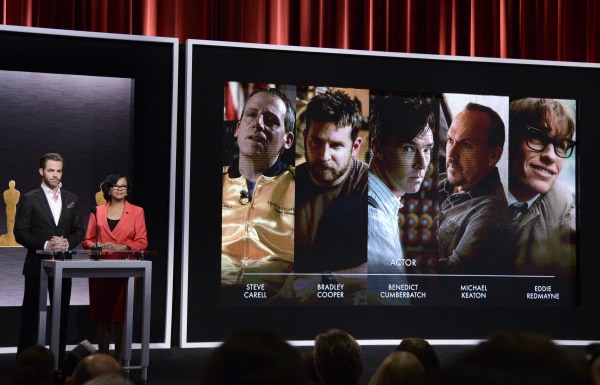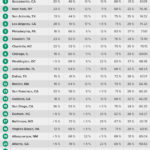by REUTERS
NBC News Asian America, March 22, 2017 —
LOS ANGELES — African Americans and Asian Americans showed up in force at the box office in 2016 as major movies showed greater diversity in their casting and subject matter, according to a new report by the Motion Picture Association of America.

An Oscar statue is seen at the nominations announcement for the 87th Academy Awards in Beverly Hills, California January 15, 2015. PHIL McCARTEN / Reuters
The number of frequent African-American moviegoers nearly doubled to 5.6 million last year, while the number of regular Asian-American ticket-buyers jumped from 3.2 million to 3.9 million. The MPAA defines frequent moviegoers as people who attend the cinema once a month or more. Both groups were over-represented on a population basis. African-Americans made up 15 percent of frequent moviegoers, while comprising 12 percent of the U.S. population. Asian Americans account for 8 percent of the population, but made up 11 percent of frequent moviegoers.
In 2016, Asian Americans over-represented the most of any group in terms of per capita ticket buying. They went to the movies an average of 6.1 times last year, up from 4.9 times in 2015. African Americans went an average of 4.2 times, an increase over the 3.5 times they averaged in 2015.
The rise in attendance comes as Hollywood created more movies featuring black characters, such as “Hidden Figures,” a commercial hit about pioneering African-American NASA workers, and “Moonlight,” a coming-of-age drama that won best picture at the Oscars. It also follows an industry-wide debate about diversity that was triggered after black performers were shut out of the Academy Awards for two consecutive years. This year’s Oscars were notably more diverse — not only did “Moonlight” win, but its star Mahershala Ali nabbed best supporting actor and Viola Davis picked up a supporting actress statue for her work in “Fences.”

In this Thursday, Jan. 15, 2015 file photo, Chris Pine, left, and Academy President Cheryl Boone Isaacs announce the Academy Awards nominees for best actor in a leading role at the 87th Academy Awards nomination ceremony in Beverly Hills, Calif. A report to be released Wednesday, Sept. 7, 2016 by the Media, Diversity and Social Change Initiative at the University of Southern California’s Annenberg School for Communication and Journalism finds little evidence of Hollywood improving in the diversity of its movie characters or directors. Dan Steinberg / AP
Asian characters did pop up in such blockbusters as “Rogue One: A Star Wars Story” and “The Magnificent Seven,” but there were also several instances of “whitewashing” that raised protests. “Ghost in the Shell,” an upcoming adaptation of a Japanese manga, and “Doctor Strange,” a Marvel Comics film, both cast white actors as characters that had originally been depicted as Asian.
It’s not clear if these movies were just a few stray examples of diversity that attracted attention because of their commercial success or if the industry is creating more roles for actors of color. There was certainly ample room for improvement. A USC study from last fall found that out of the top-grossing films of 2015, white actors played 73.7 percent of speaking or named characters. The researchers discovered that only 12.2 percent of speaking or named characters were black, 5.3 percent were Latino, and 3.9 percent were Asian.
Not every ethnic group was showing up as frequently to the multiplexes. Hispanics have been one of the most reliable groups of moviegoers, but they didn’t exhibit the same appetite for the films being released last year. They remained the second-biggest sector of ticket buyers after Caucasians, but their representation dipped on a per capita basis. Hispanics frequented the movies 4.6 times on average, down from 2015 when they averaged 5.2 visits.
RELATED:











